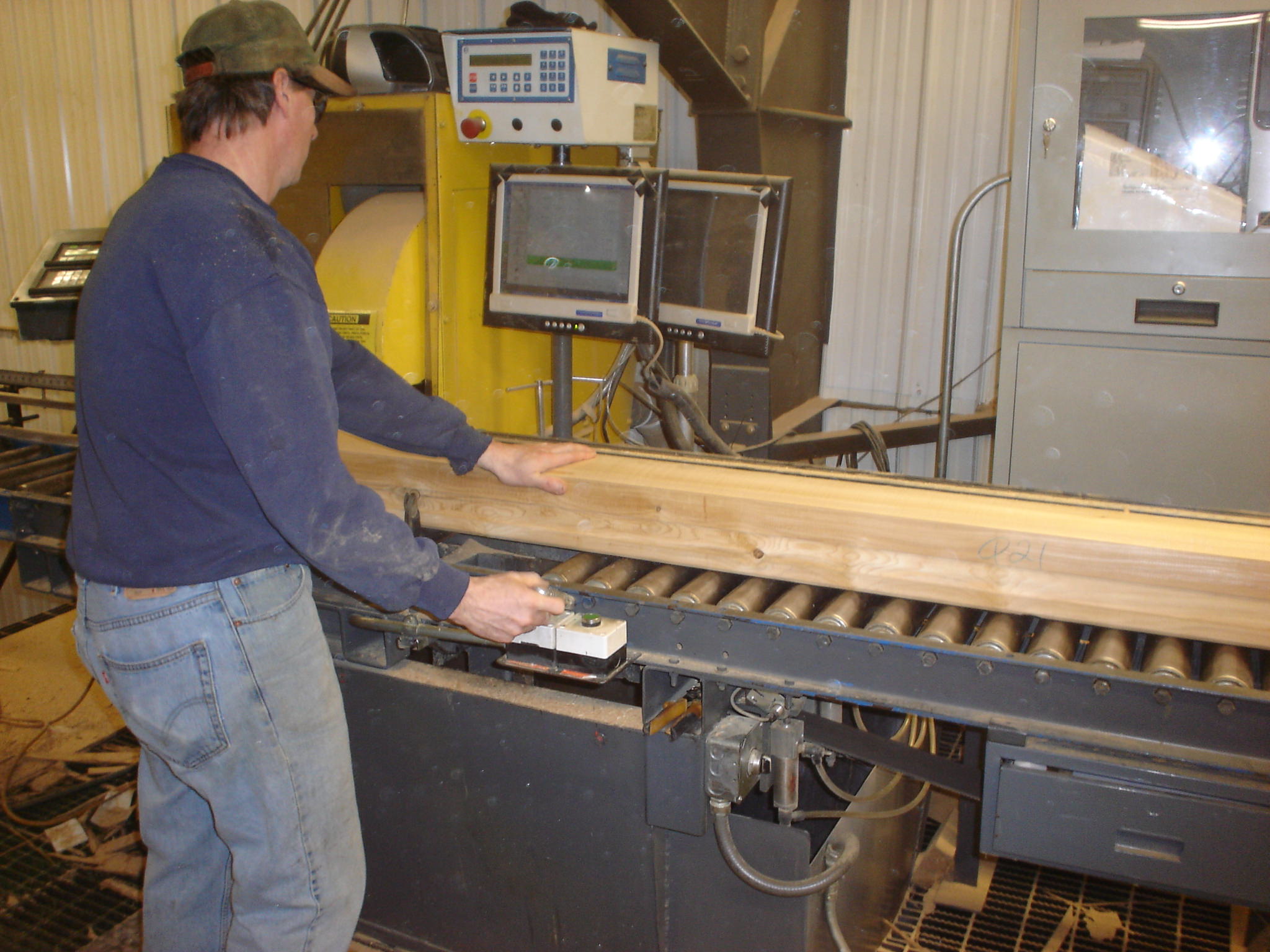One of the reasons Katahdin has managed to maintain its competitive position in the log home industry is its custom-designed house manufacturing line. This is where the wall stock logs are precision cut into lengths that assemble at your site with maximum efficiency. How does Katahdin do it? Here’s an overview of how the house line works:
Log Stock Preparation
When your order is scheduled for the house line, the first step is to ensure an appropriate quantity of log stock is ready. Katahdin’s Northern White Cedar logs are dried until they reach a low level of an average of 12 percent moisture. Much of the drying occurs in the open air, once the logs have been processed into 6" x 6" and 6" x 8" squared logs of varying lengths. To remove the last 3-4% of moisture remaining after air drying, the logs may require a short session of finishing in the log kiln, which is heated by the biomass boiler. The biomass boiler allows us to avoid costly carbon-based fuels that other manufacturers use to kiln dry their log stock.
Then the logs are sent to the planer, which puts the customer’s preferred profile —flat, beveled or round— on the log and cuts the tongue and groove where the logs are fitted together along their lengths. Customers who opt for Katahdin’s insulation package will receive a flat interior profile, unless they choose to upgrade to a rounded interior style.
Step by Computerized Step
The house line is set up on two levels: an upper level, where the first steps are handled by the cutting and drilling machines and a lower level where the finished logs are bundled and checked as they are assembled on pallets.
On the upper lever at the start of the line, each log is examined for grading. The operator works from a display screen which shows the log cuts and specifications for the customer’s design. Katahdin’s proprietary Data CAD program translates the complete final plans into log lengths and elevations. This data is sent to the house line operator, where the logs are cut according to these specifications, with the unique length, pattern and cut design on each end.
House Line Start Up
The log is fed into the conveyor and cut to the specified length. Some special cuts such as the pointed gable end cut, are made before the log enters the line. At the second position along the line, the log passes through a hot wax printer, which embosses all pertinent information—customer name, length, the type of end cut and a bar code—onto the log. After scanning and if required, a saddle notch or a window or door flashing groove is cut after the log progresses along the line.
At the next two stops, more end cuts are made: male and female cuts for the corners of the logs, spline cuts where butt ends of logs meet, and exterior trim cuts for window and door openings.
Drilling for the lag screw fasteners takes place at the fifth stop on the line. These drill holes are positioned by the computer so that the lag screws are designed to be in different positions from one row to the next as the logs are stacked. This way, the computer minimizes the chance that the lag screws align between adjacent logs and allow the logs to be joined tightly.
The sixth station on the line is where the hand-peel machine puts a the distinctive finish on the exterior side of the log, if the customer desires. Then the log drops downstairs for its final inspection and processing.
At the final quality control station, the log’s bar code is scanned with a hand scanner. This marks the log off electronically and adds it to the inventory sheet. The logs are stacked on utility wafer boards to protect them from the elements and forklifts.
Once a bundle is complete two bar code inventory sheets are printed out. One is attached to the bundle on the inside. The bundle is wrapped in weather protective covering and the second inventory sheet is attached to the outside of the bundle. The logs are stacked in order of assembly as closely as possible given the different log lengths. This system keeps the bundles of logs that need to be opened at any one time during construction to a minimum—usually one or two at a time.
Katahdin’s house manufacturing line has been developed to make your home construction process on site as simple as possible, which saves you money in the long run.
